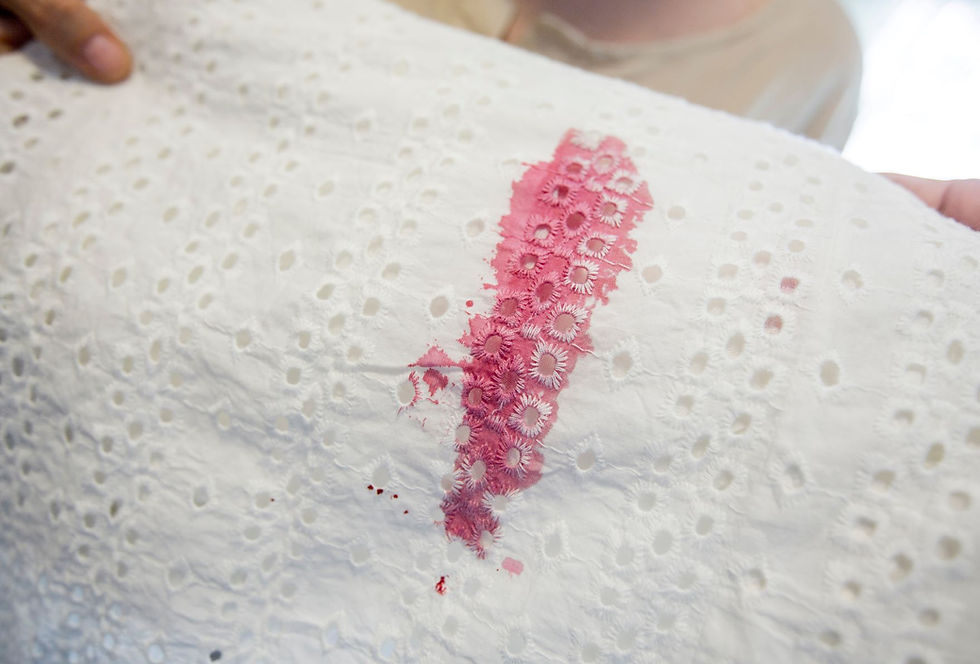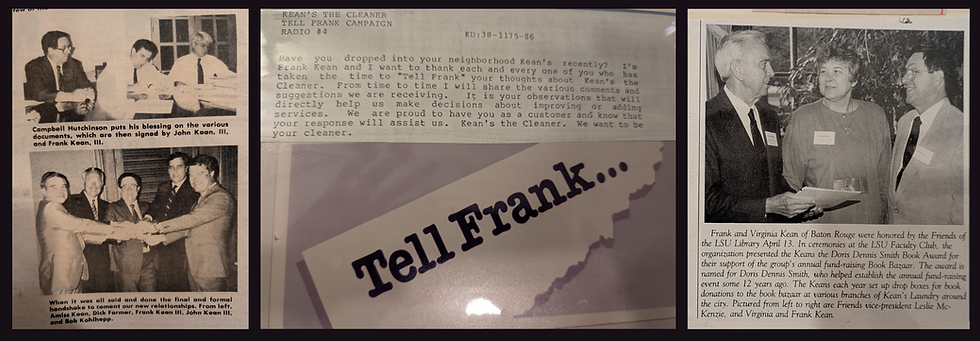Spotting Board Care
- liz6478
- Jun 8, 2022
- 2 min read
Updated: Jun 9, 2022
By Jeff "The Stain Wizard" Schwarz
Think of the spotting board as your tool kit. Each individual chemical is a tool and each tool has a specific job.
Keeping the board clean
The nose of the spotting board needs to be cleaned at least every week AND every time after you use any bleaching agent.
I was in Canada years ago and the dryclean/spotter lamented that she was finding it difficult to remove stains because other stains were always appearing on the fabric. Upon opening up the nose of the board we found out why (see photos below).
“I’ve been here 3 years and I’ve never seen anyone do that,” she said. I responded, “This is your responsibility now.”
After cleaning the nose and inside, pour HOT water into the vacuum square and make sure it drains into the catch pail. If the water doesn’t come out, the inside of your board is clogged.
Using the board
Do all the tamping and bone work on the solid part of the spotting board, then move the garment to the plastic end nose area for flushing. This will keep from the plastic being cut or warped.
You need to have 3 tamping brushes:
1 dark bristle brush - write Dryside on the brush. Use the dark bristle brush for all Dryside stain removal agents (chemicals that contain no water).
2 white bristled brushes - write tannin/acid on 1 brush, write alkali/protein on the other.
Use the correct whitebrush for wetside stain removers. Using the correct brush will increase the effectiveness of your spotting agents.
The bowls
If your board has 1 or 2 small bowls that attach to the back end of your spotting board, these bowls are there for a purpose. They are NOT for cell phones, candy bars, keys, soda cans, etc.
Dryside bowl: 1 bowl is for your dryside, 2-1 type “slop spotter.” (Old-time spotters would take solvent and drycleaning soap and apply to the stained area prior to cleaning. This was referred to as 'Slop Spotting' because they were just slopping it on the garment.)
Water bowl: This bowl is for cool, clean water. If you choose not to have separate tannin or protein brushes after each use, the white brush goes into the water. This eliminates the risk of residual chemical on the brush.
Using the spotting bone/spatula
The chemical does all the work. By using the bone or tamping brush, all we are doing is trying to massage the chemical into the fabric. We are not digging the stain out. We are not brushing the stain out. We are simply working the chemical into the fabric and loosening the stain. I never use the pointed end of the bone.
Chemical tray

Make sure bottles are properly labeled. Remove any chemical not being used from the board.
Arrange spotting agents in tray with most frequently used closest to you and lesser used chemicals further away.
Post spotting steps
after acleaning a garment comes back to the spotting board
Step 1: Try blowing it out with air only.
Step 2: Try steam and air.
Step 3: Try dryside POG.
Step 4: Try wetside POG.
Step 5: Try Tannin (weakest to strongest)
Step 6: Try Protein.
Step 7: If stain still exists, use bleaching agents.
For in-plant training or stain removal questions or problems Chris Patten and myself (Jeff Schwarz) are always available. Chrispatten@alwilson.com, or 201-240-9877. Jeffschwarz@alwilson.com, or 201-240-9446.










Comments